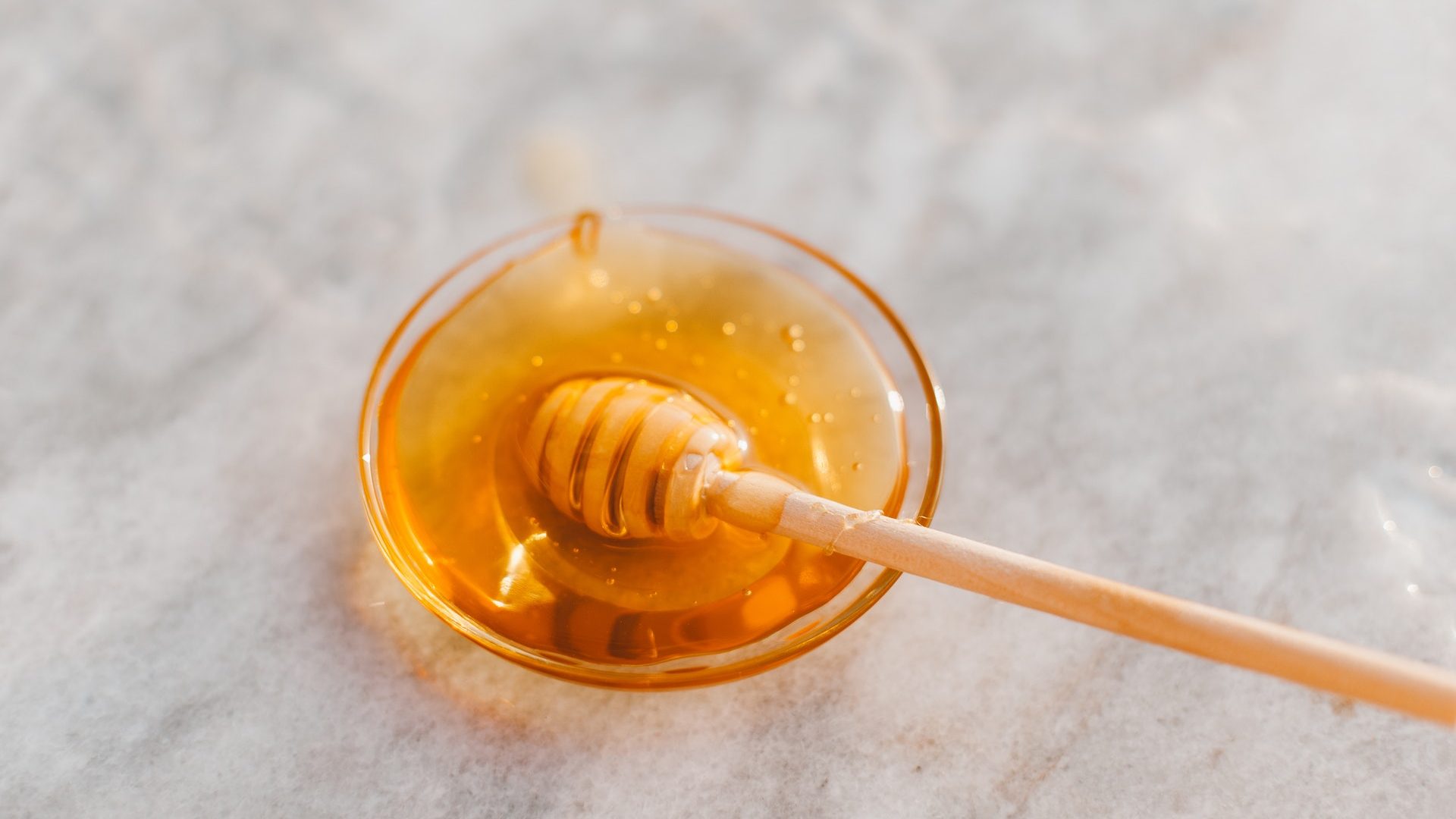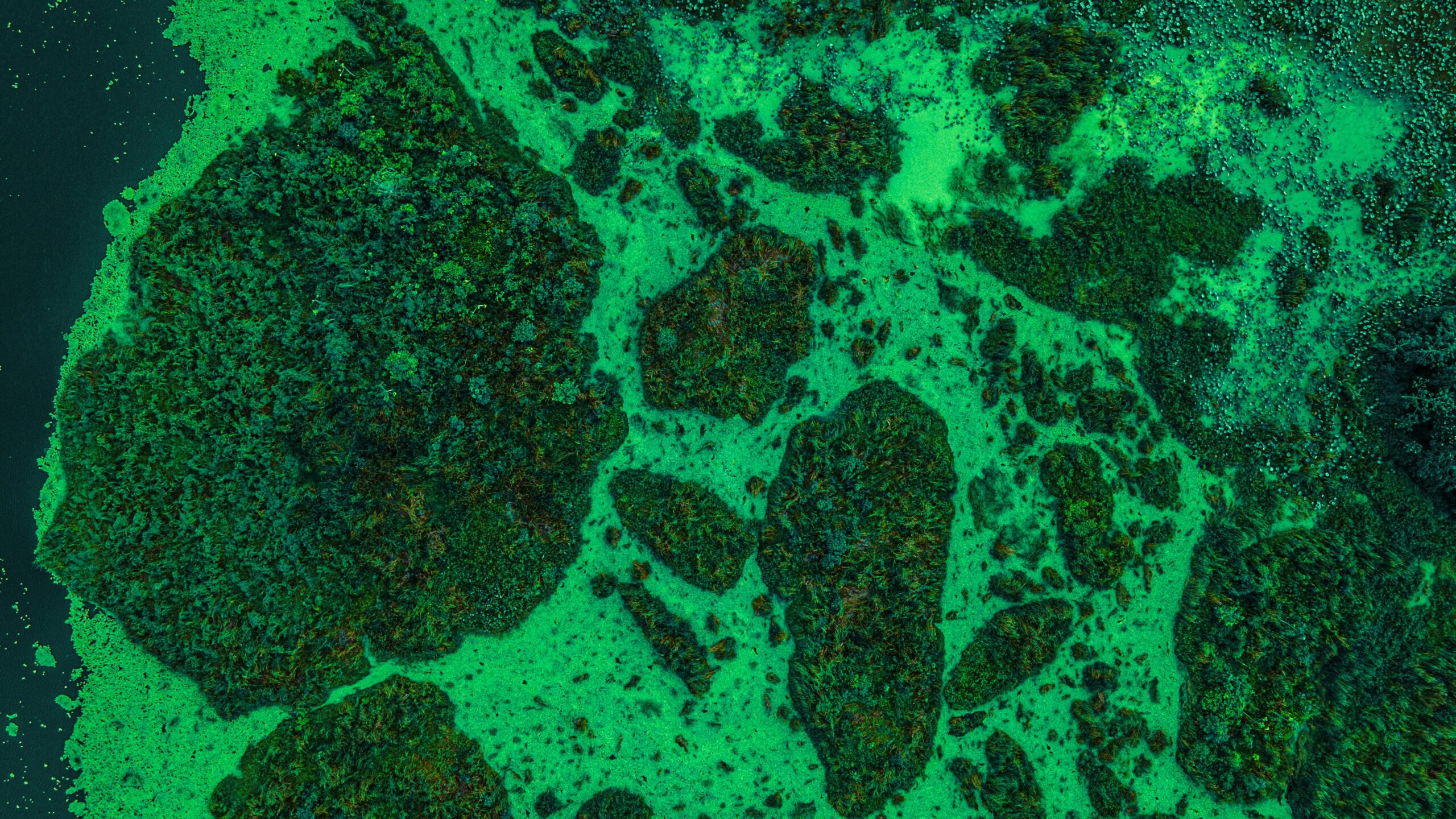Honey
Ahhh sugar, sugar
You are my candy girl
And you got me wanting you
Yes, that's what the radios warbled out of their loudspeakers in 1969 and brought the band "The Archies" to world success. Even today it spreads a good mood on the morning radio, while we enjoy dripping honey on our bread and butter. And that is also our topic today. No, not the song, but honey! The food that is hyped and loved in all cultures and on all continents. Its sweet attraction has been affecting us humans for thousands of years and of course insects and animals (especially bears). But what is true about the information that circulates around honey and what is just a myth? I myself was so interested that my team and I took a close look at good old honey.
What is honey anyway?
Chemically speaking, honey is a mixture of sugars. In fact, they are the very same building blocks that make up our household white sugar. So while a modern diet demonizes one, the other is actually considered beneficial to health?
Honey bees busily collect nectar or honeydew (which is the sweet sap from insects such as aphids), digest it, excrete it again as honey, and collect it in the combs as storage for the winter. Let that run through your head 🙂 .
As described, honey consists of the same building blocks as sugar, except that these are split by the enzyme "invertase". Honey tastes sweeter than sugar. Besides, honey also contains other carbohydrates, some water and very little protein. Potassium and sodium make up the bulk of the minerals, but one also finds a little iron, copper and manganese and some water-soluble vitamins. Also of particular interest in medicine is a substance called MGO, more on that later, and the polyphenols better known from other foods.
Polyphenols have an antioxidant effect, that is, against the harmful radicals in our body, which are produced regularly. The composition of honey differs greatly by variety and especially the content of polyphenols also depends on the flowers in the environment of the hive. (1)
The healthy effect of honey
In fact, the effect of honey in health does not seem to be unknown. Behind drinking water, it is the second most chosen self-medication in Europe (2).
Honey works antibacterialthat is, it inhibits the growth of bacteria (3,4) and is therefore used as a wound dressing to prevent the infection of wounds. It is especially popular for burns, but also for open areas in the mouth and gums (5,6) and seems to be even more effective than silver coatings. In addition, we are currently increasingly struggling with antibiotic-resistant strains of bacteria. Honey is also effective against these multi-resistant pathogens and no resistance has yet been found against honey, probably because of its complex composition. (7). Among other things, the medicinal effect is attributed to the ingredient methylglyoxal (MGO), also contained peroxides, the high sugar content and the resulting water-sucking effect, acids and polyphenols seem to be important.
Honey also has an indirect stimulating effect on the immune system: it activates the white blood cells, the cells of the immune system, and thus promotes antibody production (8). Honey can also influence the inflammatory factors in the body. The NO (nitric oxide) contained in honey seems to have a role in wound healing, collagen formation and antimicrobial effect (9).
Against fungal infections (ie. antifungal) honey acts by destroying the biofilm of these (10). Against viruses (antiviral), especially against certain herpes viruses, the effect of honey has also already been proven (11).
Can our microbiome and digestive tract benefit from honey?
There are more and more contributions to this in forums and magazines, but research is probably not yet so far advanced here.
The idea is honey could positively affect the microbiome, but the results here are still inconclusive and mostly only from animal studies.
For example, an animal study shows that the microbiome of rats is not affected by honey, compared to sugar. (12). What could disprove this assumption.
However, another research group found that honey polyphenols can have a positive effect on intestinal inflammation (colitis) in rats compared to sugar (13).
As is so often the case, more research is needed here to get off the ground.
Is there an effect on the female reproductive organs?
It is also thought to have a beneficial effect on female reproductive organs and a Systematic Review found that honey increased progesterone levels, decreased body weight gain and decreased atrophy of the vagina and uterus in rats. It could also have anti-inflammatory and antioxidant effects during menopause (artificial or natural). Long-term studies and sufficient human studies are unfortunately missing again (14).
Honey in sport
Only a few studies, with often different protocols, investigated the use of honey in training. When used acutely, immediately before or after a workout, honey appears to have a similar effect to other carbohydrate supplements. When used regularly, honey could attenuate the immune system's response to intense exercise. As always, however, it is not clear whether this is beneficial or debilitating to the training effect. As we already know, we accept the damage of training in order to grow from it. The good old Hormesis principle.
Accelerated repair, such as by cold or antioxidants, or as suspected by honey, could therefore be counterproductive.
According to a study, honey could also be positive for bone health! But in general, the effect of honey supplementation in sports seems not yet sufficiently well studied (15).
Here's a little anecdote from my experience as a performance coach in competitive sports. I have been coaching professionals in combat sports for almost 10 years. And in Thai boxing I was allowed to accompany several world champions during their rise. Here, the rumor has persistently held that honey is a miracle cure before the competition, which helps to incredible strength and lifts the performance.
In short, yes that is correct! But scientifically speaking, as already mentioned, honey consists exclusively of sugar. What has catapulted the athletes in this case energetically high, is nothing more than a natural mixture of carbohydrates. Similar to the energy gels and carbohydrate drinks that are popular in sports.
Since in my experience athletes are always undersupplied around training and competition, such a self-test with honey can quickly lead to a flight of fancy. Only (unfortunately) similar would have happened when consuming a Gatorade.
So much for myths...
Dear honey and our metabolism
The effect of honey on the metabolism of healthy and sick people is abundantly discussed. While some point out that honey has a high sugar content and is therefore not beneficial, others refer to the special ingredients and their effect on metabolism and circulatory system.
Thus, it was found that sugar and honey do not affect cholesterol levels and body weight differently, only that triglycerides are better with honey (16).
In a trial with diabetics, a weight maintenance diet was prescribed with an additional 50 g of honey or sugar daily. In the honey group, a significantly lower hip circumference was measurable at the end of the period. However, the increase of the long-term sugar value (HbA1c) with honey intake is problematic, which speaks against the use of honey for diabetics (17).
Menopausal women have a particularly high risk of cardiovascular diseases. Taking honey or honey mixtures (royal jelly, pollen, honey) positively influenced either diastolic blood pressure, fasting blood glucose or BMI. In contrast, other risk factors such as blood lipid levels, body fat percentage, or waist circumference were not significantly influenced (18).
In diabetic obese girls, no difference in sugar sensitivity was found between ingestion of honey or jam with breakfast (19).
Some works from Malaysia summarize current hypotheses on possible mechanisms of action of honey on metabolic diseases. Various ingredients, such as polyphenols, caffeic acids, quercetin, fructose, phenolic acids are addressed. In general, however, the clear results from human studies are still missing (20-22).
The body also reacts spontaneously to honey with a lower increase in blood sugar than to sugar or sugar mixtures similar to honey (23). What is certainly interesting if you want to keep an eye on the level of your blood sugar level in your diet or do not want large fluctuations. Which is of course the case with other forms of sugar, sweet stuff and also wheat products.
So, in general, the results are not conclusive enough to crown honey as a therapy or prevention for metabolic diseases.
In fact, not all honey is the same
The composition of the different types of honey depends on the type of bee, but also on the surrounding nature and pollinated flowers. Accordingly, there are honeys that have particularly positive compositions and those varieties that can offer rather delicate, sweet taste, but not much more.
The New Zealand Manuka honey is particularly well known, this has a very high MGO content (depending on the class up to over 400 mg/kg) and is therefore also increasingly studied in research (9). MGO contents of only 0.4 to 24.1 mg/kg have been found in Italian honey (24). The high content of MGO is said to have a much higher potential in wound care than weaker varieties.
In general, the darker the honey, the higher the polyphenol content and the better effect it has. Although in general we do not know much about the exact composition of Austrian honeys, a study has shown that among 9 investigated honeys, including Australian honey, Austrian chestnut honey has the best effect in destroying pathogens (= phagocytosis) (25).
In addition, a Polish study found that local honeydew honey can compete with Manuka honey in terms of antibacterial and antioxidant activity. In this study, the light honey again showed the weakest effect (3).
As always, the quantity makes the poison!
How much honey is good now? Basically, there is definitely nothing against a "normal consumption" as a breakfast ingredient or as an addition to a smoothie before sports.
As always, when something is good, still need to be careful. Honey, like many natural products, can unfortunately often carry contaminants. These include pesticides, antibiotics, heavy metals and other pollutants from the hive environment. Toxins from plants, such as the toxic pyrrolizidine alkaloids, are also found in honey. Last but not least, anaerobic bacteria (e.g. Clostridium botulinum) can also be found in honey, which is why it is sometimes recommended to buy honey in sterilized form. At the same time, organic honey provides some protection against pesticides, medicines and insecticides (1).
Therefore, I pay special attention to buy regional quality, for example, from farmers. Honey is unfortunately often blended. Since one reads on the glass then "from EG countries" or something. There can be honey from different countries inside.
Hardly anyone also knows that Mexico is one of the world's largest honey producers.
We already ship enough goods across the oceans as it is. With honey, we are certainly very well off in Austria and Germany.
My conclusion for you
The potential of honey seems to be very large. In the field of wound healing, antibacterial, antiviral and antifungal effect honey is now very well researched and has proven effect. In the area of the metabolism this proof is missing however still and/or is the potential here sobering.
Unfortunately, most of the data also still comes from animal studies. This provides us with great insight, but unfortunately the animals often get large amounts of honey that we would never eat (in relation to our body weight). Even in the few human studies, the results are then inconclusive.
So yes, honey is probably a very potent natural product that can definitely do more than just taste good. It is a clever substitute for household sugar and can be used, for example, when enjoying tea or desserts. However, honey is unfortunately not a panacea.
As always, with moderation and aim, the amount makes the poison 🙂 and honey contains at the end of the day mostly sugar!
If you need a powerful, sporty but simple recipe with honey, look at this: "Power Sports Smoothie" (Click here)
I hope to have sweetened your day a little!
Your Performance Coach
Richard Staudner











